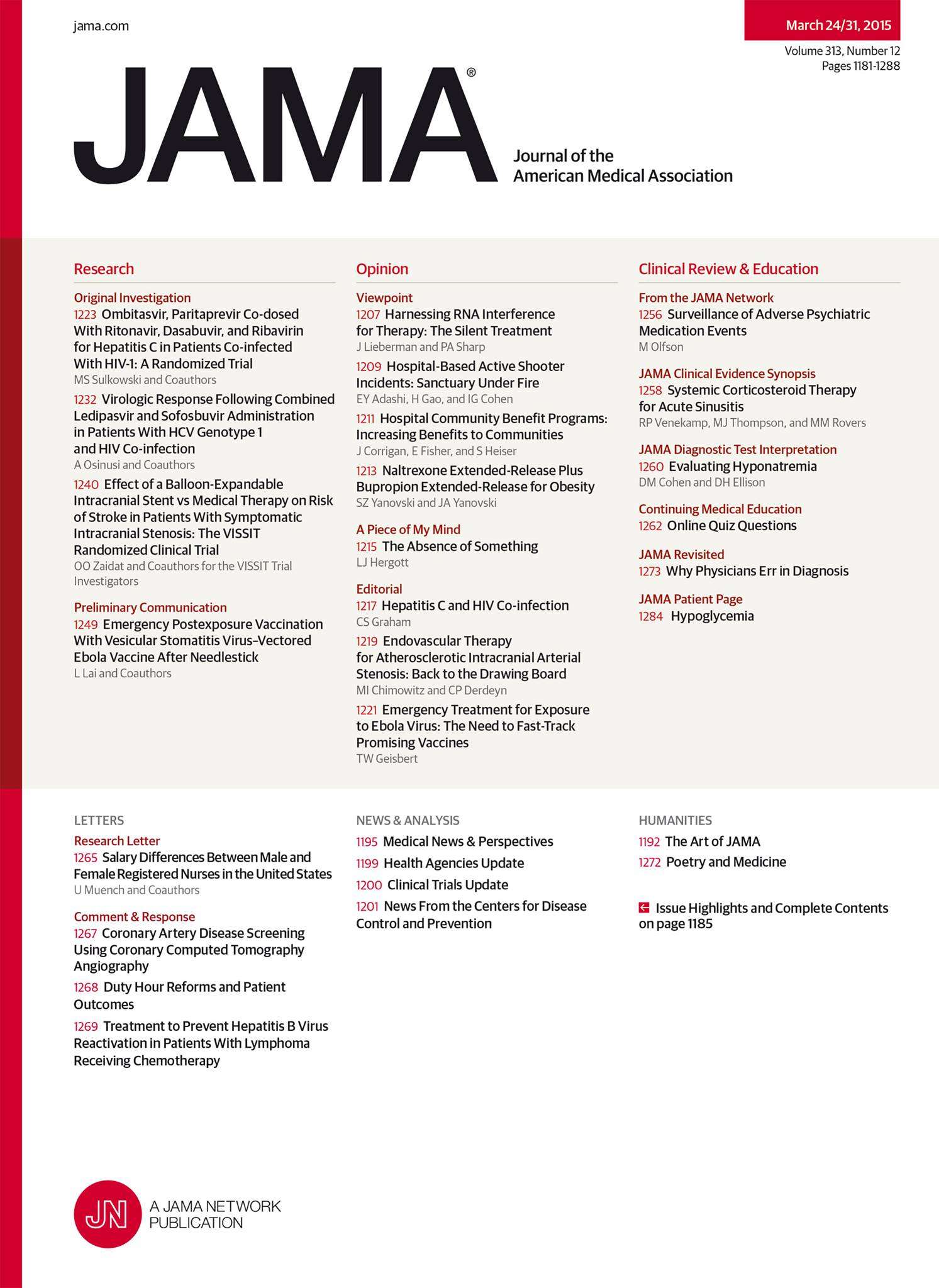
Comparable outcomes in quality of life with/(out) partner violence screening intervention

Comparable outcomes in quality of life with/(out) partner violence screening intervention
Effect of Screening for Partner Violence on Women's Quality of Life: a randomized controlled trial
JAMA. 2012 Aug 15;308(7):681-9OE EXCLUSIVE
Dr. Klevens speaks on screening for intimate partner violence.
Synopsis
2708 English- or Spanish-speaking women were randomised to undergo an intervention involving a computerized partner violence screening with a partner violence resource list, an intervention with just a partner violence resource list, or a control group with neither. The primary outcome was health-related quality of life. The results indicated that no significant differences were seen between the three groups on the outcome of quality of life at the one-year follow-up.
Was the allocation sequence adequately generated?
Was allocation adequately concealed?
Blinding Treatment Providers: Was knowledge of the allocated interventions adequately prevented?
Blinding Outcome Assessors: Was knowledge of the allocated interventions adequately prevented?
Blinding Patients: Was knowledge of the allocated interventions adequately prevented?
Was loss to follow-up (missing outcome data) infrequent?
Are reports of the study free of suggestion of selective outcome reporting?
Were outcomes objective, patient-important and assessed in a manner to limit bias (ie. duplicate assessors, Independent assessors)?
Was the sample size sufficiently large to assure a balance of prognosis and sufficiently large number of outcome events?
Was investigator expertise/experience with both treatment and control techniques likely the same (ie.were criteria for surgeon participation/expertise provided)?
Yes = 1
Uncertain = 0.5
Not Relevant = 0
No = 0
The Reporting Criteria Assessment evaluates the transparency with which authors report the methodological and trial characteristics of the trial within the publication. The assessment is divided into five categories which are presented below.
4/4
Randomization
3/4
Outcome Measurements
4/4
Inclusion / Exclusion
4/4
Therapy Description
3/4
Statistics
Detsky AS, Naylor CD, O'Rourke K, McGeer AJ, L'Abbé KA. J Clin Epidemiol. 1992;45:255-65
The Fragility Index is a tool that aids in the interpretation of significant findings, providing a measure of strength for a result. The Fragility Index represents the number of consecutive events that need to be added to a dichotomous outcome to make the finding no longer significant. A small number represents a weaker finding and a large number represents a stronger finding.
Why was this study needed now?
Partner violence is considered a health and public health problem. Screening for partner violence has been recommended by a number of health organizations. However, there is a lack of evidence that supports that this intervention results in improvement in health-related outcomes. This study examines the effect of screening for partner violence on the quality of life of women.
What was the principal research question?
What are the outcomes in quality of life for women participating in an intervention involving a computerized screening for partner violence with a partner violence resource list, an intervention with only a violence resource list, or no intervention at all over a one-year follow-up period?
What were the important findings?
- No significant differences were observed in the QOL physical health component between Group 1 (Screen and resource list) (n=801; mean score, 46.8; 95% CI, 46.1-47.4), Group 2 (Resource list only) (n=772; mean score, 46.4; 95% CI, 45.8-47.1), and Group 3 (Control) (n=791; mean score, 47.2; 95% CI, 46.5-47.8) at the 1-year follow-up.
- No significant differences were observed between the three groups on the mental health component (Group 1: Mean score, 48.3; 95% CI, 47.5-49.1; Group 2: Mean score, 48.0; 95% CI, 47.2-48.9; Group 3: Mean score, 47.8; 95% CI, 47.0-48.6).
- No significant differences were seen between the three groups on the the outcomes of: number of days unable to work (p=0.96) or complete housework (p=0.66), hospitalizations (p=0.40), visits from ambulatory care (p=0.12) or the emergency department (p=0.40), recurrence of partner violence (Screened group compared to control: p=0.16; Resource list group compared to control: p=0.12), or patients who contacted a partner violence agency (Screened group compared to control: p=0.60; Resource list group compared to control: p=0.21).
What should I remember most?
No significant improvement of health-related quality of life was observed when women seeking care in outpatient clinical settings were provided a partner violence resource list with or without a screening intervention compared to controls.
How will this affect the care of my patients?
Computerized partner violence screening and the provision of a partner violence resource list to those who screened positive did not provide any significant improvements in health-related quality of life. It is unclear if the population studied (all outpatients) is representative of an orthopaedic practice (i.e. fracture clinic), and thus difficult to generalize results. Other forms of intervention need to be developed to provide better care for those suffering from partner violence.
Learn about our AI Driven
High Impact Search Feature
Our AI driven High Impact metric calculates the impact an article will have by considering both the publishing journal and the content of the article itself. Built using the latest advances in natural language processing, OE High Impact predicts an article’s future number of citations better than impact factor alone.
Continue



 LOGIN
LOGIN

Join the Conversation
Please Login or Join to leave comments.